Morocco
Morocco is a country that is physically located in Africa, but its soul remains in the Middle East.
Long ago, conquerors emerged from the Arabian Peninsula and captured half of the world, from Iran to Spain. All of North Africa—modern Egypt, Tunisia, Libya, Algeria—became part of the Islamic Caliphate for several centuries.
Among the conquered countries was Morocco. Therefore, although the country is located on the African continent, in essence, it is an extension of the Middle East.
Tangerines
The word “mandarin” came into many languages from French, and it entered French from neighbors — this is what officials from the Ming Dynasty in China were called in Portugal. They dressed in all orange and resembled mandarins.
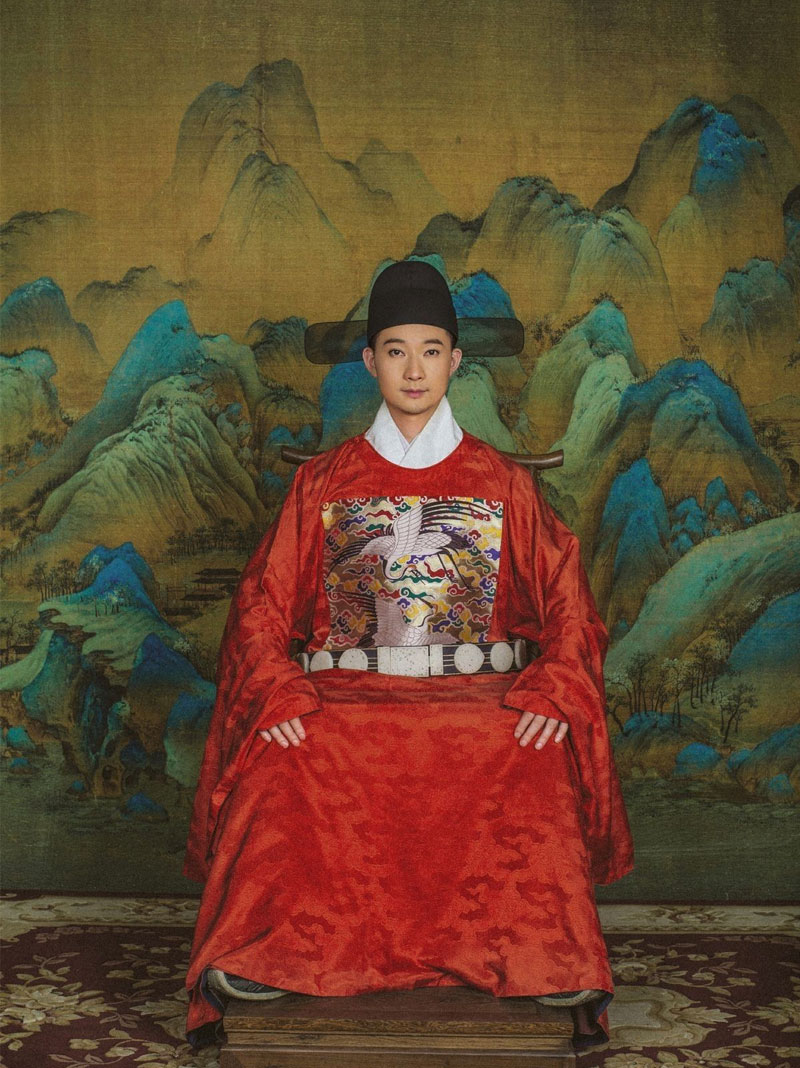
In English, however, mandarin is called tangerine. To be precise, tangerine is a subtype of mandarins, but in everyday life, they are not distinguished.
The word “tangerine” originated from the city of Tangier, a major port in Morocco. Therefore, it can be confidently said that Morocco is the homeland of tangerines, and the association brought to us by the famous diamond-shaped labels of the Clementines Maroc company is not a marketing ploy at all.
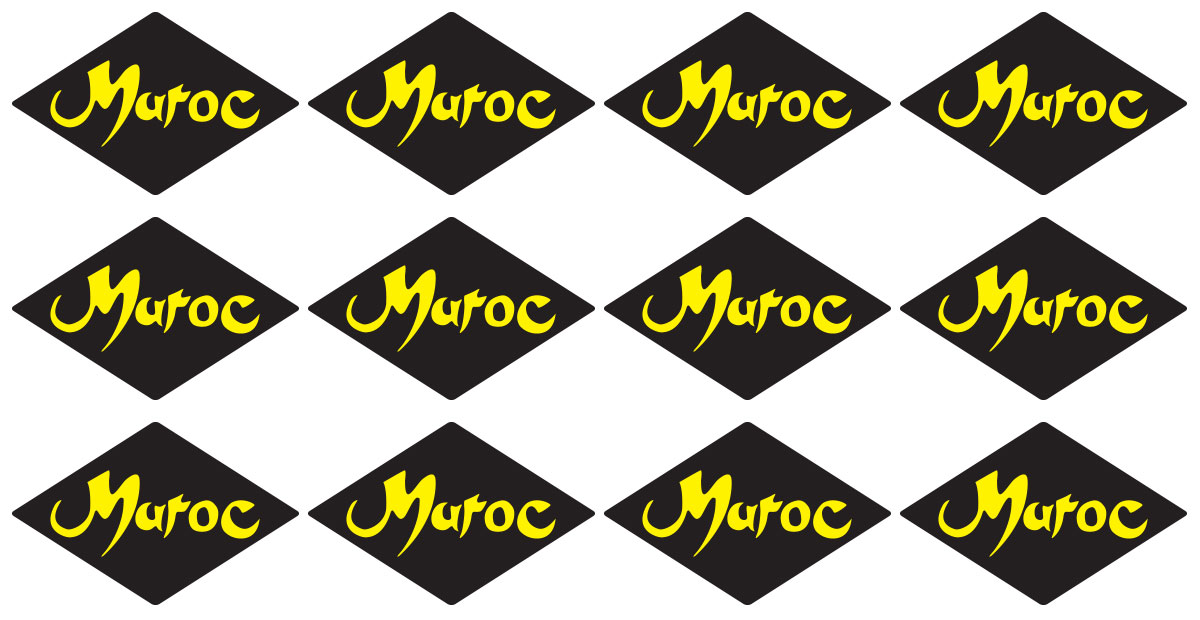
In Morocco itself, there are even too many mandarins. Mandarin trees grow here like weeds. For example, a bunch of mandarins can hang on a tram stop. While waiting for transportation, you can pluck and eat them.

Food
It’s not surprising that juice in Morocco is cheaper than water. A glass of freshly squeezed juice from any fruit—orange, mandarin, pomegranate, grapefruit, banana — can be bought for around fifteen rubles, it seems.
Juices are squeezed at every turn in Morocco. If a city doesn’t have a large square, juice machines can be found in alleys and cafes. If there is a large square in the city, it will be filled with stalls selling juice.

Juice cannot be tasteless. You just need to squeeze the fruit, and the juice is ready; it is good on its own. It is much more difficult to make tasty tea and coffee.
There is no decent coffee anywhere in Morocco. None at all. Moroccans either drink instant coffee or the simplest black coffee with milk. Cappuccinos and lattes are completely terrible everywhere. One exception is French-style coffee called nus-nus. You can drink it if you close your eyes tightly.
Meanwhile, in Morocco, there is excellent tea. Tea with mint, sage, and honey can be enjoyed throughout the evening while sitting on the terrace of a café in Marrakech. In Morocco, tea is poured from decorative teapots with long spouts. The waiter, skillfully pouring tea into small cups, gracefully raises the teapot towards the sky and then swiftly lowers it down. They are champions in this art – not a drop of tea goes astray.
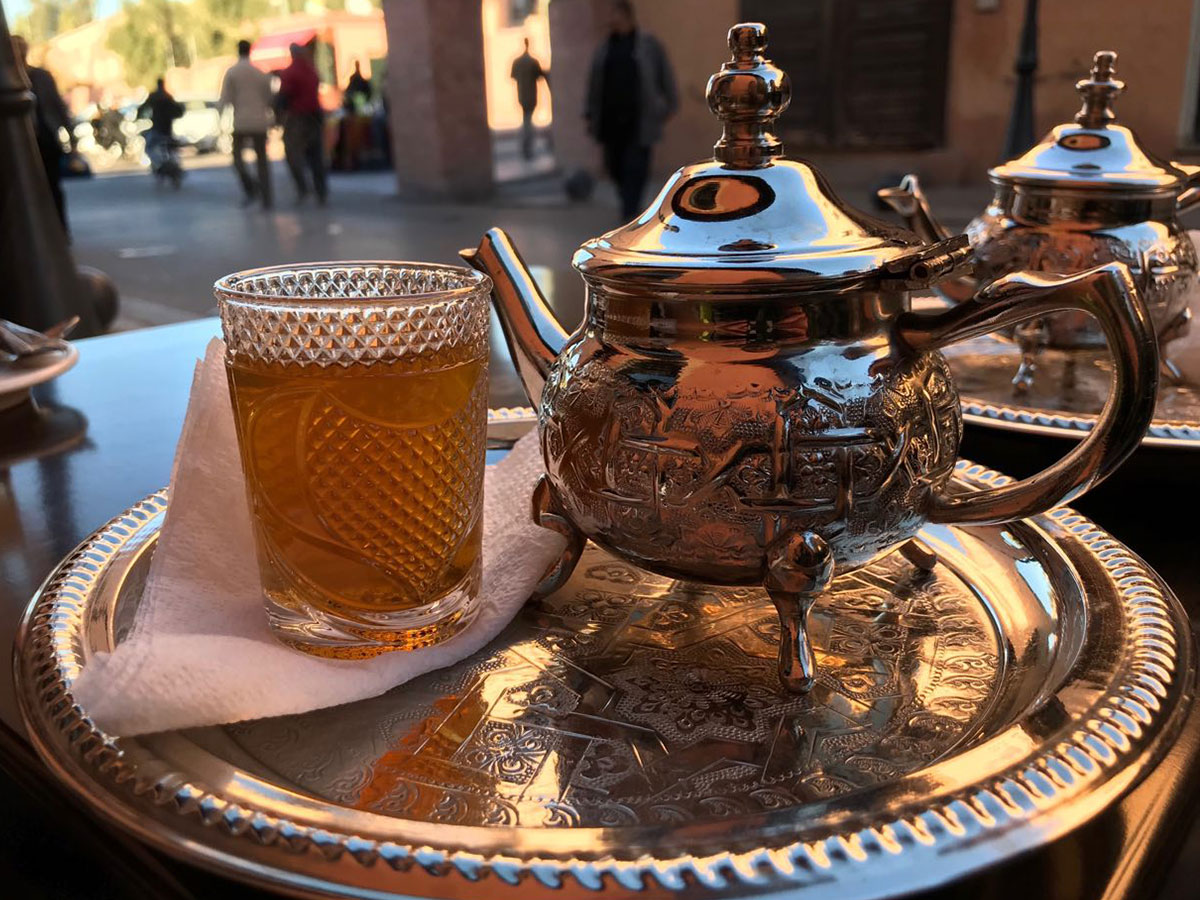
Surprisingly, despite the abundance of juices and tea in Morocco, there is absolutely nothing to eat. Although at first glance, the country seems to have an abundance of delicious and cheap food.
In Moroccan cafes, it is customary to eat slowly, generously, and measuredly. First, they will bring two or three large bowls of appetizers to your table. One of the bowls will definitely contain olives. Sometimes they serve two types: black olives and green olives. Peanuts are often served in the third bowl.
Olives in Morocco are not like the ones in Russia at all. They are very oily and monstrously salty—so salty that they seem bitter. The pit of such olives fits tightly against the wrinkled black skin. It is very difficult to remove the pit. Moroccan olives are eaten by rolling them around in the mouth, gradually nibbling off the bitter-salty skin from the pit. Saliva flows abundantly, making you crave for more.
But they don’t bring the food. There is another plate of the same salty, skinless peanuts on the table. Peanuts in Morocco are salted along with the sub-skin, so they have a purplish color. It’s convenient to scoop up a pinch of peanuts like salt and then pour them into the mouth, tilting your head back. The desire arises to alternate between eating peanuts and olives. It’s unclear what you’re pairing them with: olives with peanuts or vice versa? Which one is saltier?
Finally, after half an hour of waiting, the main dishes are brought. The Moroccan national cuisine is served in special baking pots that resemble Persian yakhals — clay hills for storing water. It is best to order meat in this pot, called a tagine — it always turns out very juicy, infused with spices, and slow-cooked.
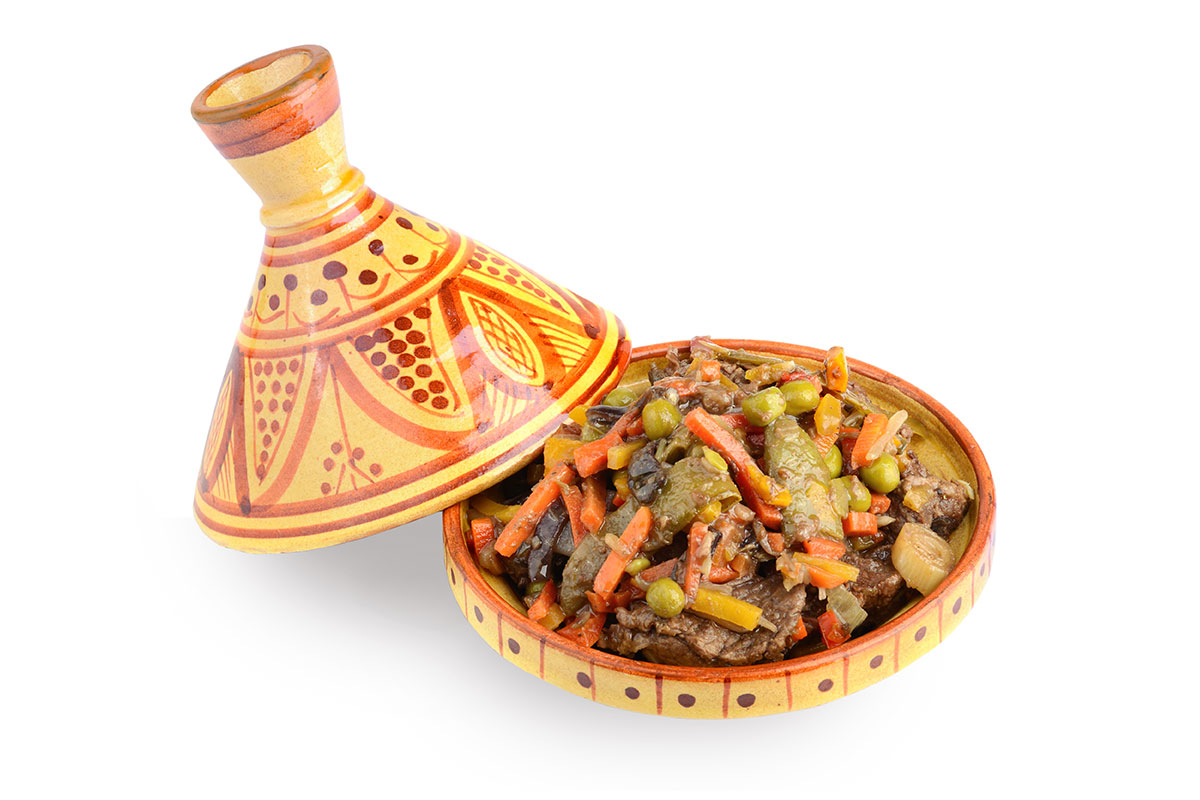
Here it turns out that among all the variety of kebabs, lentil soups, and sauces, among fragrant koftas with saffron and meat-filled pancakes, the most delicious food is simple sandwiches with butter.
I never thought that throughout the trip, I would dream of going to a cafe and eating another buttered roll. In Morocco, it seems they make the most ordinary baguettes — French ones. The whole secret is in the butter. It’s salty, not just salted on top, but soaked with salt all the way through.
The creamy taste of Moroccan butter is complemented by a subtle salty undertone that comes and goes. The butter gently melts in the mouth, and its flavor is ordinary. But then another speck of salt touches the tongue, and you can taste that familiar salty echo, similar to the occasional sensation one gets when eating dumplings with rich sauce, bay leaf, and spices.
The author unsuccessfully searched for such butter in Moscow. He found salted, but not salty. A jar cost 8 dollars. And a full table for three people in Casablanca cost only 25 dollars.

There is exotic food in Morocco as well. How about camel stew?

Cities
Casablanca is the entry point for a journey through Morocco and at the same time the most boring city in the country. Don’t stay here for more than a day, go straight to Marrakech.
Marrakech and Fez are two absolutely incredible cities, each of which deserves at least two days of exploration. Other popular places include Tangier, the blue city of Chefchaouen, and Rabat — they are also worth no more than a day’s visit.
Cities in Morocco are built according to a unique principle. The old city is never touched, no matter how grim and worn-out it may be. All modernization and renovation are carried out away from it. As a result, we can talk not about cities but about endless dualities of Morocco.
Every major city in the country consists of two cities: the old and the new. All decayed shanties, filthy markets, grim alleys, as well as intricately carved Moorish shutters and doors, calligraphic patterns of mosques, and caravanserai wells are preserved in their original state. Cars are not allowed to pass through the center of the old city, the medina. Similarly, all new constructions, luxury apartments, and business centers are built as a separate city 5 kilometers away from the historic city. Dualism.
Hence, we have varying reviews about Morocco. Some people stay in hotels in the new city, while others live in caravanserais in the old city. Some venture into the historic quarters for sightseeing, while others, conversely, only catch a glimpse of the new constructions upon arrival at the train station.
In reality, both sides exist in Morocco. The old city often resembles India, and it can be very uncomfortable in it.


All discomforts are forgotten as soon as you find your place in the old city. Each person will find something different to their liking among these quarters, but hardly anyone will remain indifferent.

The new cities don’t deserve any attention, and they are interesting to see only as an illustration that even in Africa, cultural heritage is better preserved than in Russia. No matter how terrible the old city may be, the kings of Morocco understand better than presidents like Putin: it represents the history and culture of the country.
You will never see a single skyscraper or plastic business center in Marrakech or Fez. All of that exists in the country, but it’s placed so far away that it feels like a different city altogether.

Berbers
Berbers live in remote villages of Morocco.
Berbers are indigenous tribes of North Africa who have been living here even before the Arab conquest and were among the first to embrace Islam. The name of the people comes from the word “barbar,” which was pronounced with the sound /b/ in Greek.
Besides Morocco, the Berbers live in Algeria — around 12 million people. However, in Morocco, the Berbers make up half of the country’s population. In total, there are over 15 million Berbers living here.
Berbers are usually depicted in photographs wearing an indigo-colored turban called a “tagelmust” wrapped around their heads, dressed in traditional attire known as a “djellaba.”
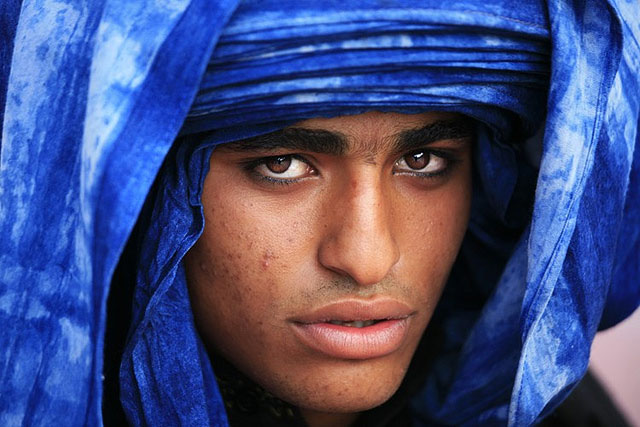
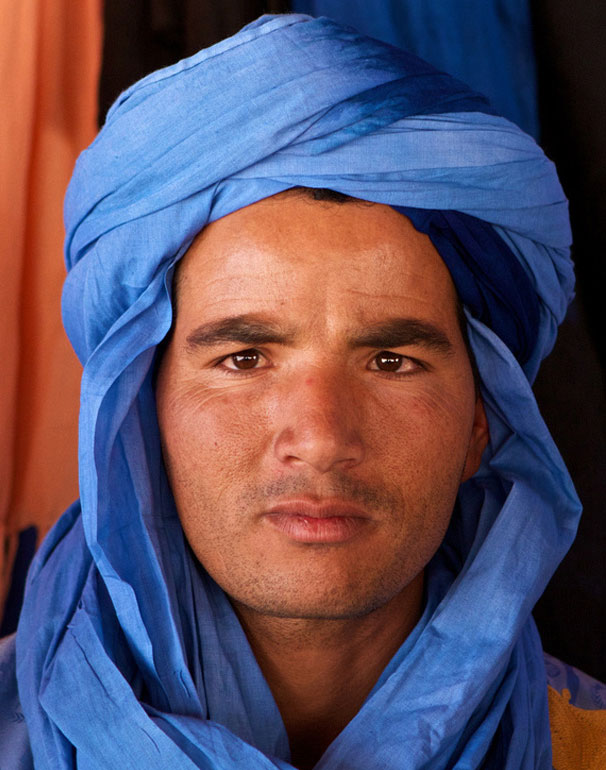
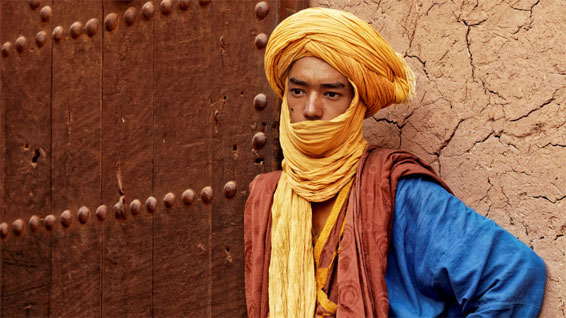
Of course, reality is far from the beautiful picture. Berbers mainly live in rural areas. Colorful clothing easily gets dirty, and the long dress also doesn’t help with working in the fields. Berbers rarely dress up like in the pictures: either on holidays or if someone lives in the city and can afford to take care of themselves.
Berbers wear trousers, European-style shirts, sweaters, and jackets in their everyday life. In general, they dress in a European way. In such clothing, they resemble more the people from South Central than mythical Bedouins. And you should try walking around a village without sidewalks during the rainy season, dressed in a robe and with your eyes covered by a turban.

Most Berbers live in such villages. There are even more remote areas far from cities where people live in complete solitude in the middle of the desert, but such hermits are a minority.

Urban Berbers, on the other hand, enjoy wearing a different type of clothing — the djellaba. In this robe with a pointed hood, they stroll through Moroccan markets and resemble either members of the Ku Klux Klan or Jedi from Star Wars.

In any case, the Berber language with its incredible letters is most similar to a Galactic Standard.

Western Sahara
To the south of Morocco lies a disputed territory called Western Sahara.
Morocco gained independence in 1956 from France. At that time, Western Sahara became a province of Spain, and Morocco, as a new state, immediately made demands to annex this province.
After 17 years, in 1975, Morocco organized a mass demonstration called the “Green March,” which involved over 350,000 people. The march was peaceful, and the participants did not carry weapons. However, they were accompanied by an army of 20,000 armed Moroccans. As a result, the march encountered no resistance, and since then, Spain relinquished its mandate, and Western Sahara remains under Moroccan occupation.
Western Sahara is a completely enigmatic country. Its size constitutes half of Morocco’s territory, yet it is inhabited by slightly over 500,000 people throughout the entire country. Among them, 270,000 people reside in the capital city of El-Aaiún. It is one of the least densely populated countries in the world.
Why does it need independence? I don’t know, but the Central Committee sincerely supports the struggle for the independence of the working people of Western Sahara!


